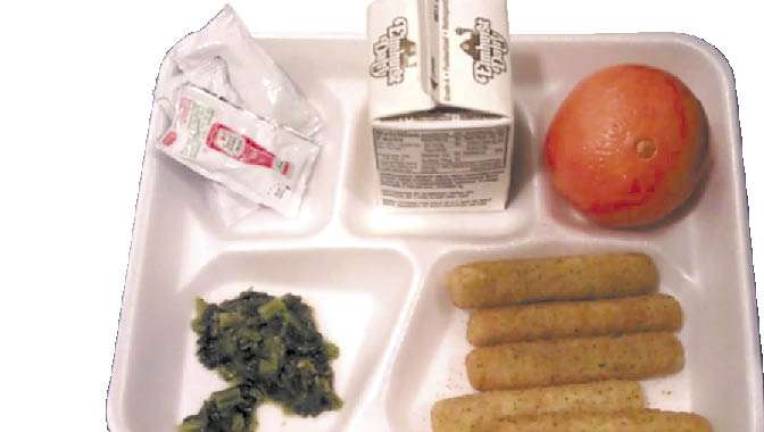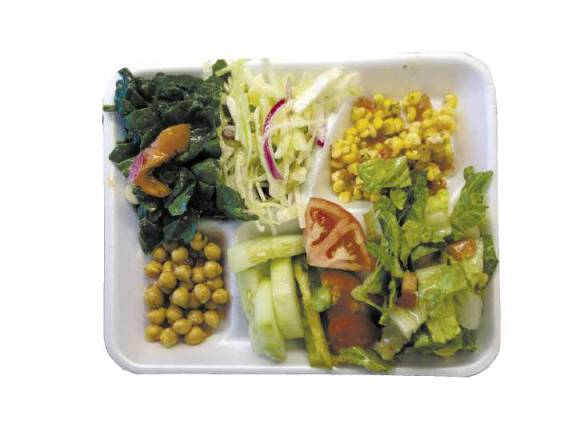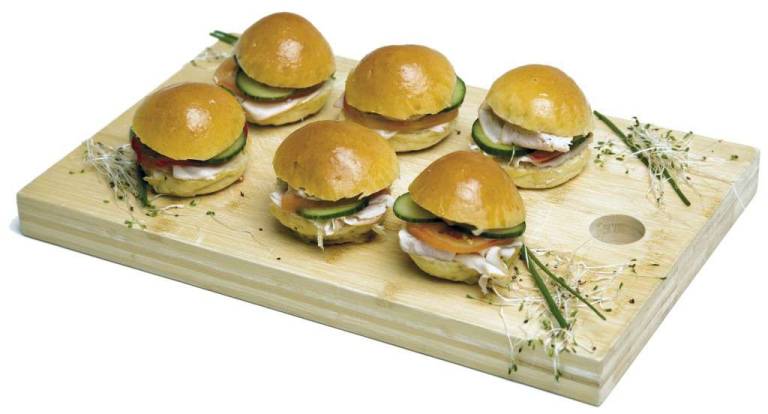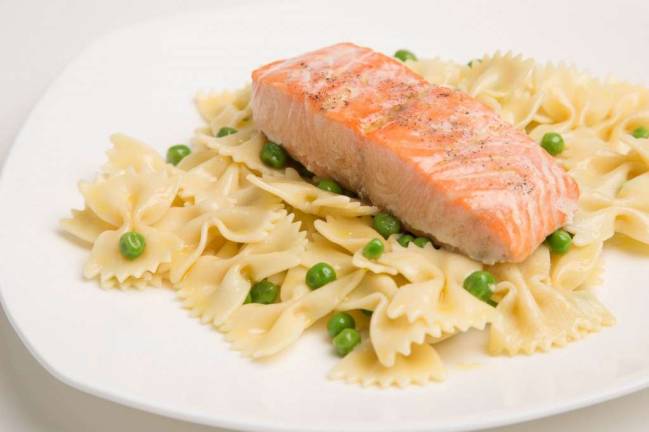Taking the Slop Out of Sloppy Joe




Parents and schools try out new solutions to revive the school lunch
On today's menu: curried chickpeas with a side of jasmine rose rice and "superhero spinach."
This may sound like a dish at a trendy vegetarian restaurant, but it's actually one of the brand-new "Meatless Monday" items on the Department of Education's new alternative school lunch menu for grades K-8.
The chickpea and veggie-heavy menu contrasts sharply with the southwestern beef and cheeseburgers from the DOE's regular menu, and it's definitely a far cry from the half-empty trays of petrified pizza slices and unidentified meats seen in fourth grader Zachary's undercover documentary," Yuck!" about his Little Italy school's cafeteria food (shown in this year's Manhattan Film Festival). Any school can use the alternative menu with little to no extra cost, according to the DOE.
But Elizabeth Puccini, founder of NYC Green Schools, whose third grader son's school, East Village Community, was one of the first to implement the alternative menu, estimates that only 20-30 schools use the menu, and most principals and cafeteria managers don't know it exists.
"Unless you have a nutrition committee working on these issues, I don't know how you'd become informed," said Puccini, whose son is vegetarian. "This was an enormous victory, and we need to get the word out about it."
In 2012, the FDA released new requirements for school cafeterias nationwide, mandating that each child take at least one fruit or vegetable on the lunch line, as well as capping calories overall and switching out full fat for non-fat milk. So what about Zachary's "Yuck" which showed tray after tray practically devoid of vegetables? DOE representative Margie Feinberg said that the documentary was probably made before federal regulations were in place and that "the student in the documentary may not have been selecting all the fruit and vegetables that were offered to him."
In fact, many parents have noted improvements in school food.
"My son loves the hot lunch at school," said Linda Sussman, a parent at P.S. 183 on East 66th Street. "Our fresh fruit and salad bar is replenished every half hour. But probably not every school has good, nutritious food and that disturbs me."
Healthy or not, whether kids will actually eat the food is the question. One 8th grader at The Computer School on West 77th Street, candidly said that she would never eat her school's food: "it's so gross!" she said.
"You can't just put in a salad bar and call it a day," said Manhattan Borough President candidate Gale Brewer. "It has to be one kids want to eat." Andi Valasquez, a parent at P.S. 163 on West 97th Street confirmed Gale Brewer's suspicions. She said that when she was a lunchtime aid, she watched the salad wilt away, untouched by kids, day after day.
The problem is, according to Janet Poppendieck, a former professor at Hunter College who has written a lot about school food, that even with changing federal regulations, it can be tough to switch kids over from "kid-friendly foods" chicken nuggets and pizza to vegetables and whole wheat.
That's where Wellness in the Schools comes in. Wellness is a non-profit organization that has been working with public underprivileged schools since 2008. They used to bring professional chefs armed with gourmet, kid-friendly recipes to the 20-something schools they work with across the city. But that changed with the new federal regulations. This year, they use DOE-sanctioned menus, and focus instead on training school chefs on the importance of seasoning, and encouraging made-from-scratch dishes where they can.
"Even when schools have salad bars they may be full of unfamiliar ingredients, but having composed salads like a three bean salad, and attractive vegetables makes a kid want to eat it," said Reana Kovalcik. "We found we don't need them to be tricked, we take small steps - not burgers to quinoa, but from burgers to salads."
Wellness in the Schools mostly serves underprivileged schools where almost every child receives free or reduced lunch. For schools without financial difficulty, the program costs $30,000, which is something that most schools can't afford.
For two French mothers living on the Upper East Side and Upper West Side, waiting for Wellness in the Schools or some other miraculous solution to come to their children's schools was out of the question, so they created In'Box, a healthy school lunch service delivering to Manhattan schools that just launched this year. At $10 per meal (more than four times the cost of a DOE lunch), it's a hefty price to pay for a kid's meal, but co-founders Stephanie Rubin and Ingrid Calvo say it's worth it.
"I had to prepare lunch for my daughter every day otherwise she wouldn't eat," said Calvo, whose child used to attend P.S. 199. "Even when they had healthy food it just wasn't appealing."
At In'Box Your Meal, they believe in exposing kids to new foods like quiche, quinoa salad and finger sandwiches. Rubin says they work with real culinary institute trained chefs and make sure the food is always colorful, presentation is unique and they even include a small treat for children, like dried fruit, to make eating lunch fun.
But most parents can't afford $50 a week to spend on their kid's lunches. And even with new DOE and federal improvements, there's still a long way to go in the kitchen itself, said Poppendieck, where a lack of resources, trained chefs and ovens seriously limit schools.
"Still, the food has definitely improved citywide," said Poppendieck. "I recently visited a school where the food actually looked terrific and fresh."